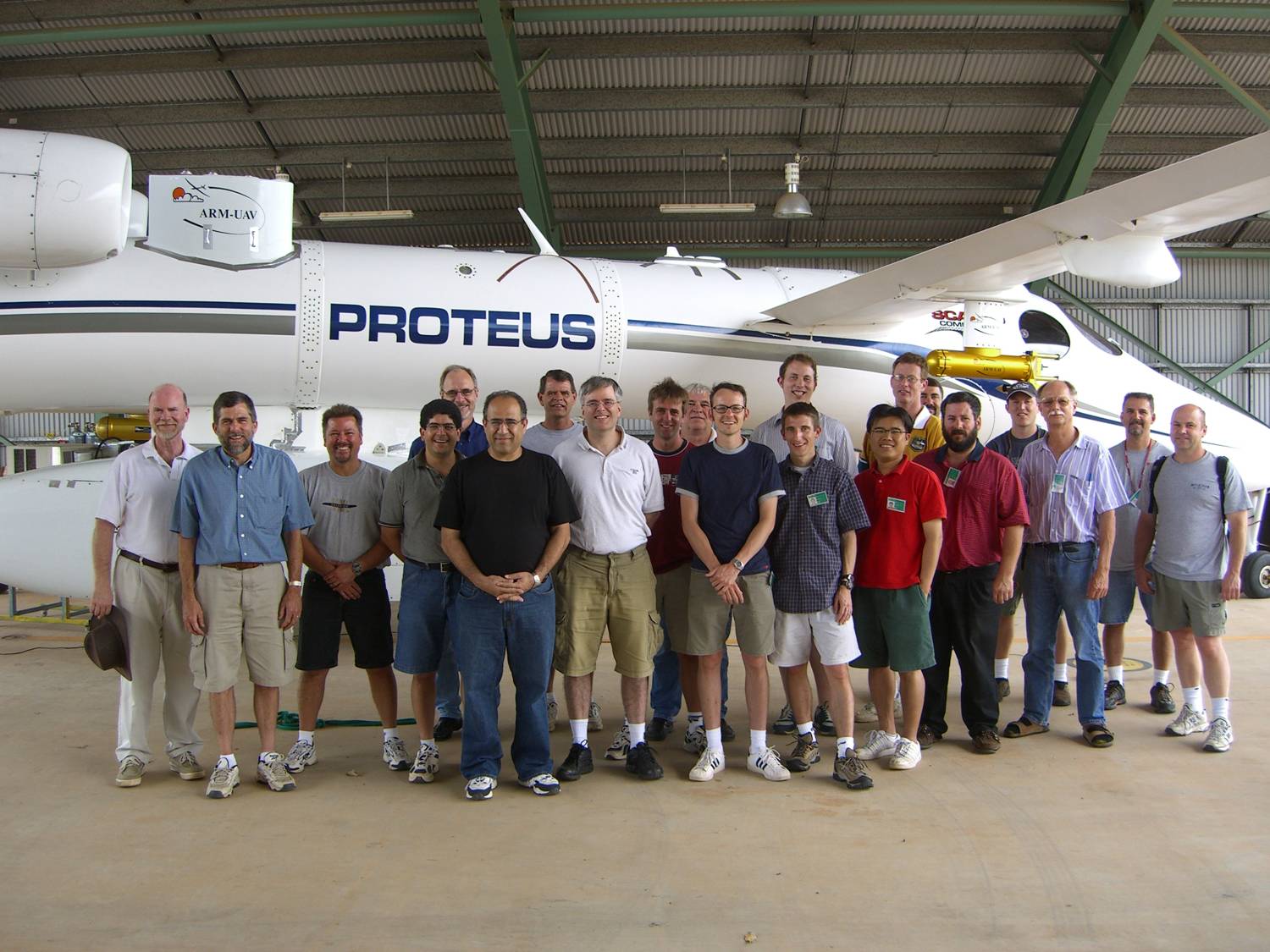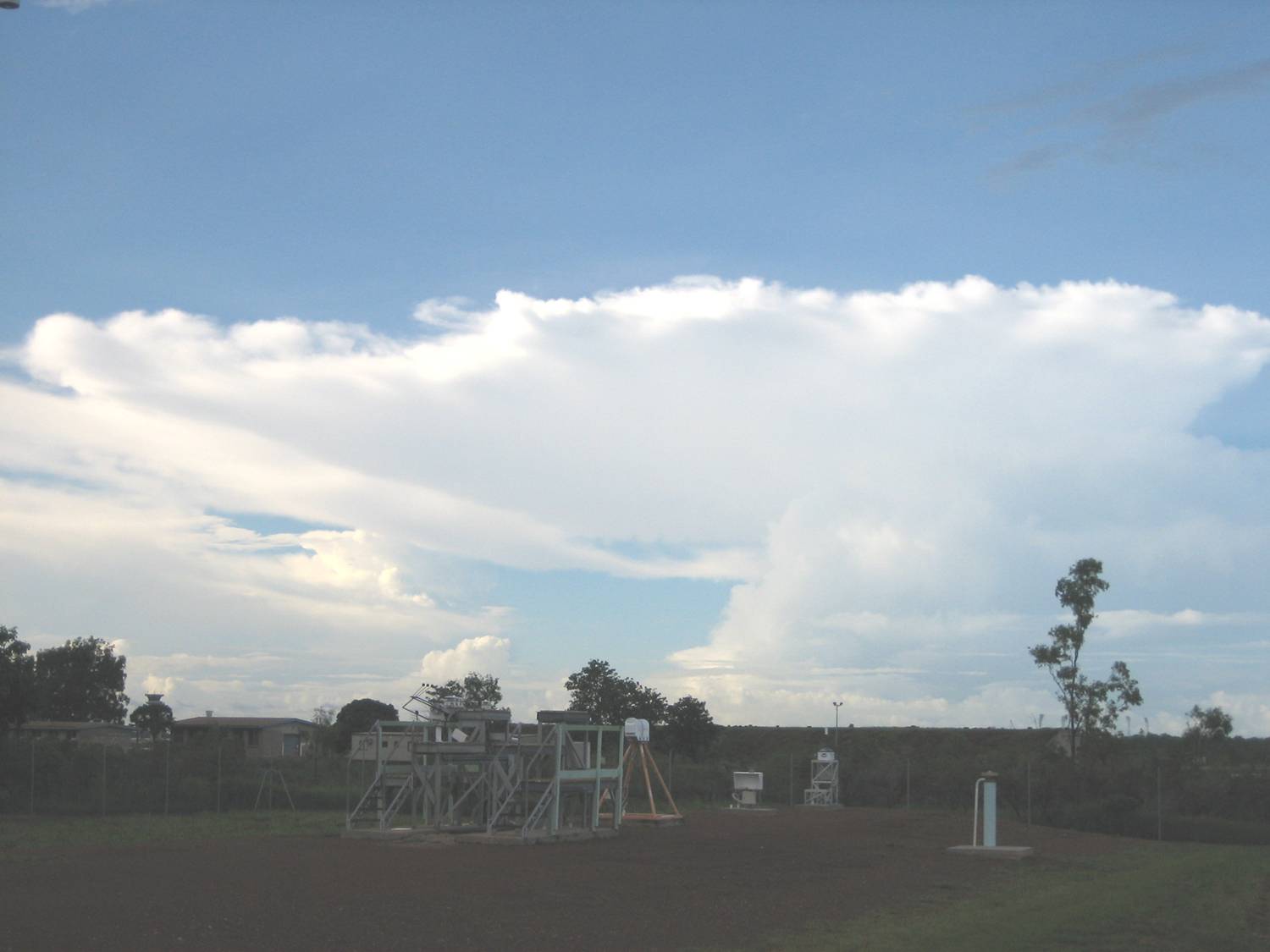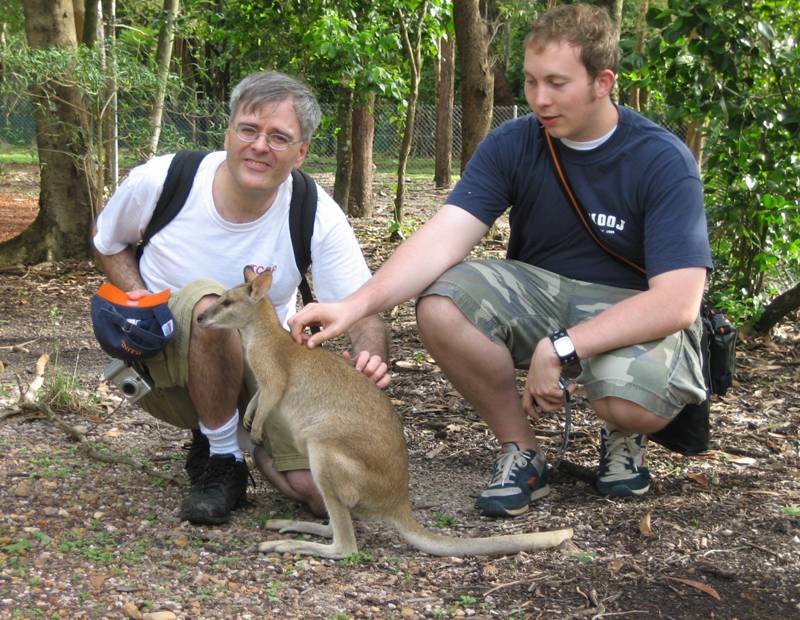
 Greg
McFarquhar
University of Illinois
Greg
McFarquhar
University of Illinois
|
TWP-ICE
 |
 |
 |
| The ARM UAV team pose in front of the Scaled Composites Proteus aircraft in Darwin, Australia during TWP-ICE. Prof. McFarquhar, Junshik Um and Matt Freer are included. | Example of type of tropica anvil that Proteus attempted to make measurements within during TWP-ICE. Some of the ground-based remote sensors at ARM's TWP site are seen in front. | On an offday during TWP-ICE, Prof. McFarquhar and Matt Freer introduce themselves to one of the local residents (a wallaby) |
| TWP-ICE: The Tropical Warm Pool International Cloud Experiment (TWP-ICE) was a comprehensive campaign based out of Darwn, Australia using 5 aircraft, a ship, frequent soundings and ground-based remote sensors aimed at improving our understanding of the factors that control tropical convection as well as determining how tropical convection affects the cloud particles found in deep convectice anvils and tropical cirrus. The comprehensive science objectives included the following: 1) relating the cirrus characteristics to storm intensity and proximity to parent convection; 2) relating measurements of aerosols and chemical species in the outflow of the deep convection to the low-level sources and understanding how the convection modified these quantities; 3) comparing the concentrations of the aerosols and chemical species in the outflow to their background levels; 4) improving and evaluating retrievals from ground-based and satellite-based remote sensors; 5) providing data sets for forcing and evaluating single column and cloud resolving models; 6) documenting the evolution of oceanic convection from its early convective stage to remnant cirrus, with special emphasis on the microphysics; 7) measuring the dynamical and radiative impacts of cloud systems; 8) characterizing the environment in which cloud systems occur; 9) documenting the evolution of the convective boundary layer throughout the diurnal cycle and lifetime of the convective systems; and 10) observing the characteristics of convectively generated gravity waves. |
| Uof Illinois Role and Interests: In his capacity of Chief Scientist of the ARM UAV program, Prof. McFarquhar acted as lead scientist for the Scaled Composites Protues Aircraft. Graduate student Junshik Um and staff associated Matt Freer played a major role in processing anad quality controlling the cloud microphysical data that were collected by the Proteus. The research thrusts of the Illinois group since the end of the project have concentrated on invstigating what controls how much small crystals (with maximum dimensions smaller than 50 micrometers) contribute to the mass and radiative properties of cirrus, mainly by investigating how the shattering of large crystals on the protruding shrouds and inlets of some microphysical probes artificially enhances the concentrations of small particles. In addition, work has concentrated on examining the single-scattering properties of both aggregate and small ice crystals, and determining how the microphysical properties of cirrus are related to the strengh of convection generating them, and to the spatial and temporal proximity to the partent convection. |
Publications arising from TWP-ICE: McFarquhar, G.M., J. Um, M. Freer, D. Baumgardner, G.L., Kok and G. Mace, 2007: The importance of small ice crystals to cirrus properties: Observations from the Tropical Western Pacific International Cloud Experiment (TWP-ICE). Geophys. Res. Lett., 34, L13803, doi:10.1029/2007GL029865. Barnard, J.C., C.N. Long, E.I. Kassianov, S.A. McFarlane, J.M. Comstock, M. Freer and G.M. McFarquhar, 2008: Development and evaluation of a simple algorithm to find cloud optical depth with emphasis on thin ice clouds. Open Atmos. Sci. J., 2, 46-55.
Liou, K.N., Y. Gu, Q. Yue and G. McFarguhar, 2008: On the correlation between ice water content and ice crystal size and its application to radiative transfer and general circulation models. Geophys. Res. Lett., 35, L13805, doi:10.1029/2008GL033918. May, P.T., J.H. Mather, G. Vaughan, C. Jacob, G.M. McFarquhar, K.N. Bower, 2008: The Tropical Warm Pool International Cloud Experiment (TWPICE). Bull. Amer. Meteor. Soc., 89, 629-645. Um, J., and G.M. McFarquhar, 2009: Single-scattering properties of aggregates of plates from TWP-ICE. Quart. J. Roy. Meteor. Soc., In press. Fen, J., J. Comstock, M. Ovtchinnikov, S. A. McFarlane, G. McFarquhar and G. Allen, 2009: Tropical anvil characteristics and water vapor of the tropical tropopause layer (TTL): Impact of heterogeneous and homogeneous freezing parameterizations. J. Geophys. Res., submitted. Nousiainen, T., H. Lindqvist, and G.M. McFarquhar, 2009: Quasi-spherical ice crystals in tropical cirrus. J. Atmos. Sci., submitted.
|
Thesis arising from TWP-ICE: Um, Junshik, “The microphysical and radiative properties of tropical cirrus from the 2006 Tropical Warm Pool International Cloud Experiment (TWP-ICE)”, Ph.D. thesis, 2009.
|